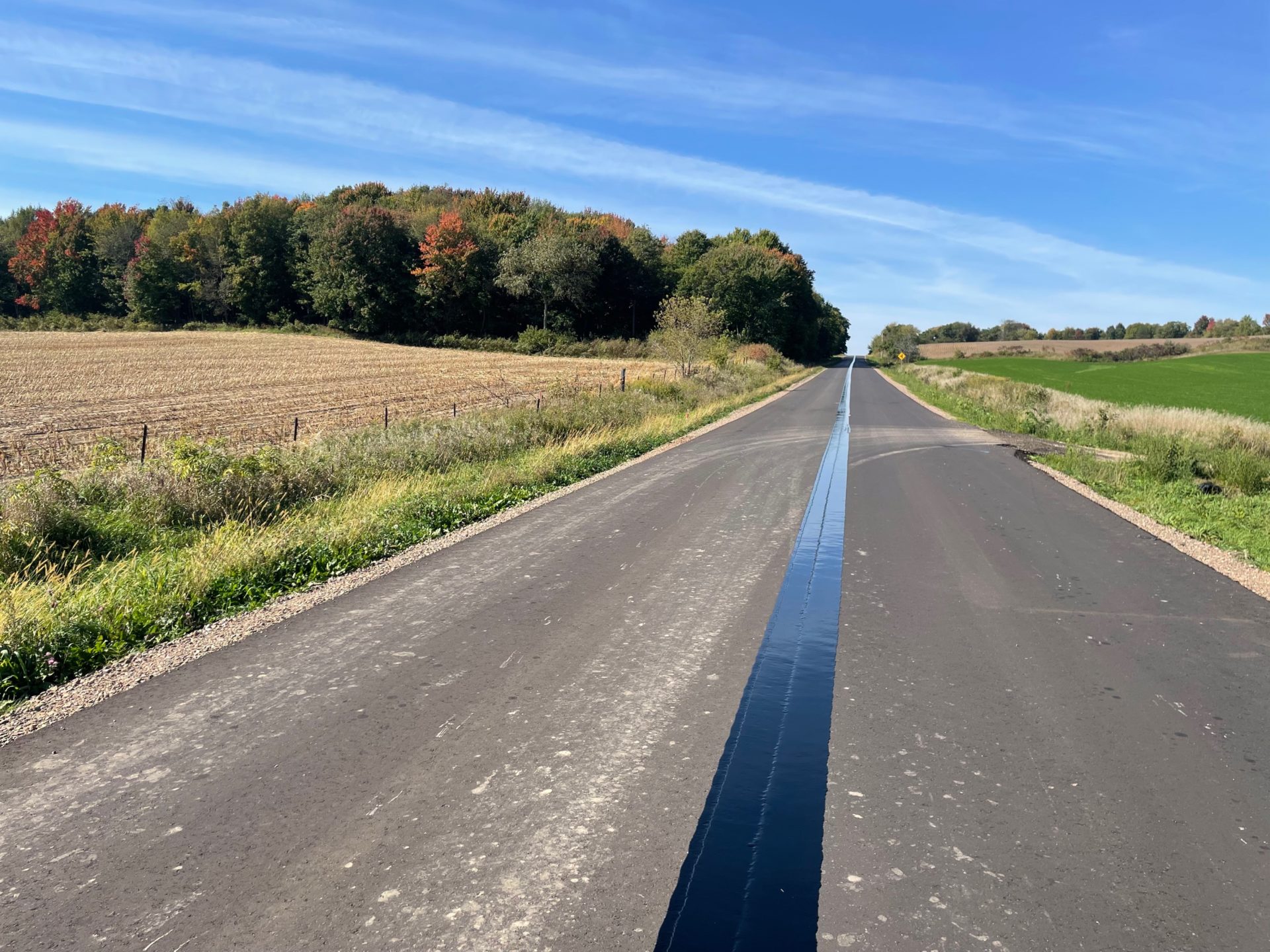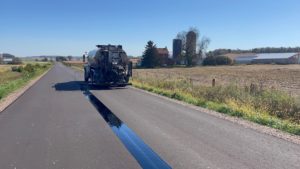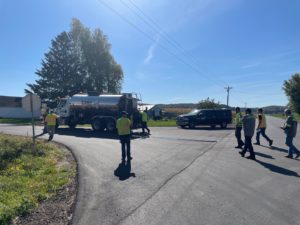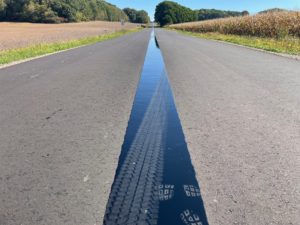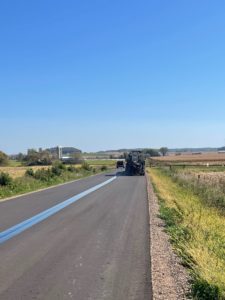Studies have shown that longitudinal joints in pavements are often the weakest areas of a road. Typically the joints are low in density, high in voids and thus are highly permeable. These areas become conduits to air and water infiltration which leads to damage and premature pavement failure. (1)
VRAM is a Void Reducing Asphalt Membrane. This particular VRAM project in Eau Claire County is between Fall Creek and Augusta on Highway JJ. It covers 2.1 miles of JJ from State Highway 12 to County Highway V. VRAM was applied on September 29th. Mathy/Monarch Paving Contractor and ProTack was the Applicator. The mix design was 4LT fine graded, which was similar to Calumet County.(2)
How VRAM Works?
VRAM is a materials approach to filling pavement voids. Prior to paving, VRAM material is sprayed on an 18” wide location directly under the area where the longitudinal joint will be located. When the HMA is placed and compacted over VRAM, the material migrates upward into the fresh pavement. It fills voids to help ensure the joint is less permeable.(3)
Asphalt Materials, a midwestern based company has been involved in the asphalt business since 1956 and supplies an industry leading VRAM under the brand name J-Band®. Since 2002, J-Band has a proven track record of extending the life of roads by protecting longitudinal joints and improving the performance of the entire pavement in over 19 states.
Notes:
(1) The density and air void content of asphalt mixtures affect the durability and performance of asphalt pavements. Pavement longitudinal joints typically have a lower density than the 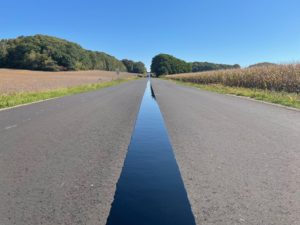 mat because they receive less compaction than the center section of the mat for various reasons. The higher air void percentages resulting from lower densities can lead to high permeability and allow water infiltration, which in turn can cause moisture-induced damage and decrease base and subbase support to the pavement, reducing pavement life. Void-reducing asphalt membrane (VRAM) has been used at the longitudinal joints of asphalt pavements to achieve higher densities and prevent moisture infiltration, thereby reducing deterioration at the longitudinal joints. VRAM is applied before the hot-mix asphalt (HMA) layer is placed and migrates into the HMA to fill 50% to 70% of the air voids. (Iowa State University Study for Minnesota Department of Transportation, DEC. 2020)
mat because they receive less compaction than the center section of the mat for various reasons. The higher air void percentages resulting from lower densities can lead to high permeability and allow water infiltration, which in turn can cause moisture-induced damage and decrease base and subbase support to the pavement, reducing pavement life. Void-reducing asphalt membrane (VRAM) has been used at the longitudinal joints of asphalt pavements to achieve higher densities and prevent moisture infiltration, thereby reducing deterioration at the longitudinal joints. VRAM is applied before the hot-mix asphalt (HMA) layer is placed and migrates into the HMA to fill 50% to 70% of the air voids. (Iowa State University Study for Minnesota Department of Transportation, DEC. 2020)
(2) VRAM, Void Reducing Asphalt Membrane is referred to in Illinois as LJS, Longitudinal Joint Sealant.
(3) Depending on the situation VRAM can be sprayed at different width’s. This article notes 18” which is a typical application width for centerline applications.
J-Band needs to be non-tracking in less than 30 minutes; normally it only takes 5-10 minutes to be non-tracking. The picture below shows the non-tracking nature of J-Band.
J-Band® is a product of Asphalt Materials, Inc. and was created in the labs of The Heritage Research Group.

